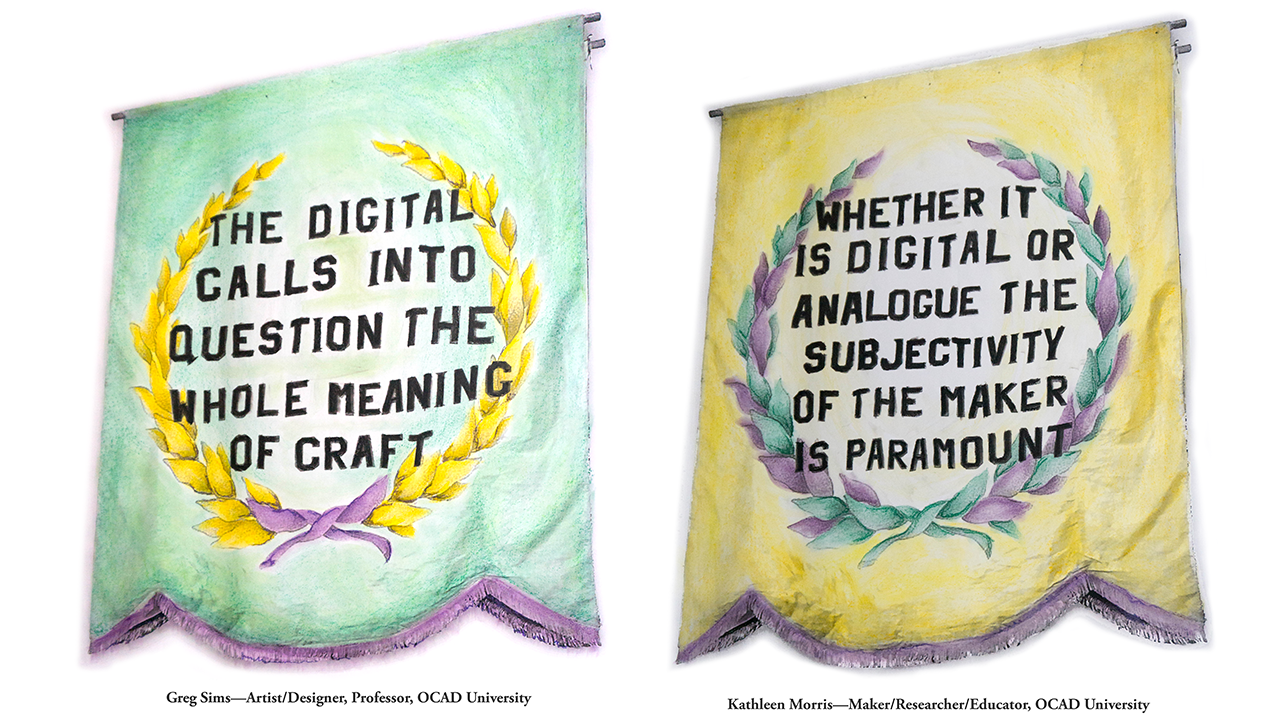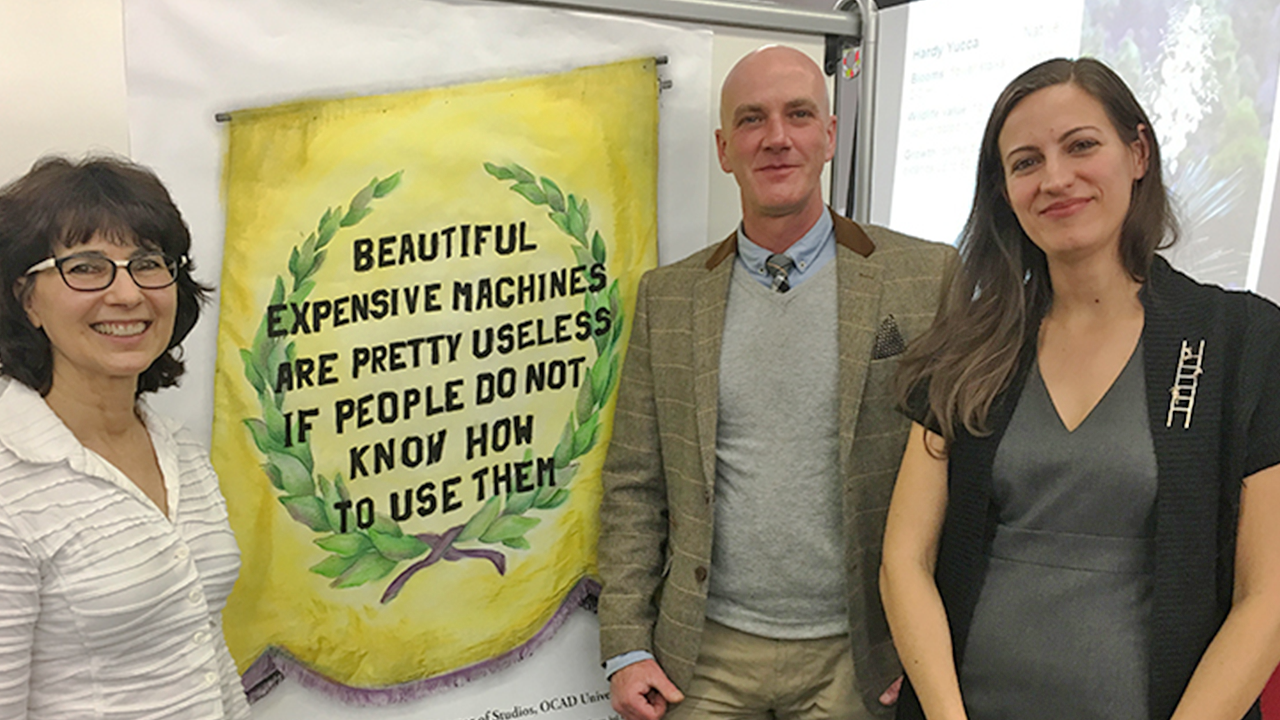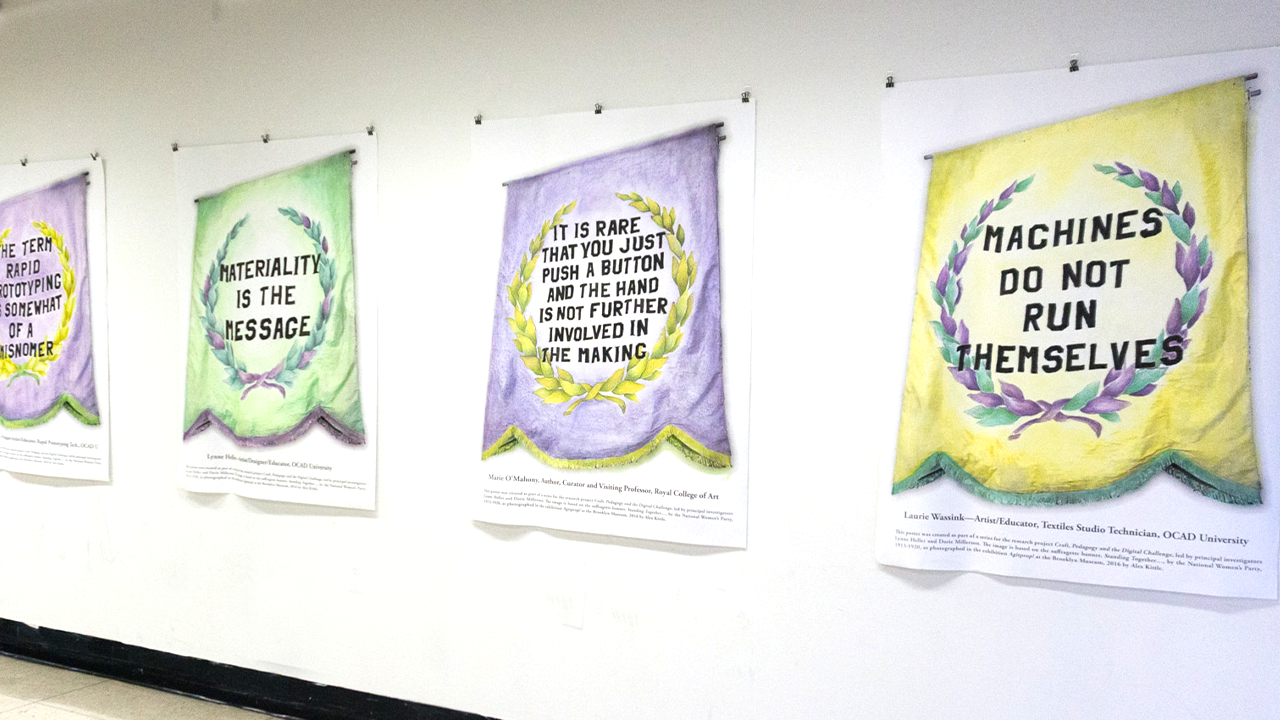RESEARCH CREATION
Greg Sims, I'thandi Munro (RA)
Shifting Values investigates the creation of parametrically-designed objects based on data derived from a given survey. The initial proposed questionnaire will be directed toward students regarding their potentially racialized experiences at the post-secondary level. The project is comprised of; 1) the development of a functional and flexible parametric model 2) corresponding inputs posed as a student-facing survey 3) investigation of resulting objects and production 4) presentation of the resulting forms. Questions are focused on participants’ racial and ethnic identity, family make-up, access to community supports, institutional barriers and personal motivations. Data derived from the survey will inform the parametric design of a series of individual objects, beginning with a simple ring. The jewellery ring format is familiar, intimate and has functional aspects that may or may not be impacted by the data set. 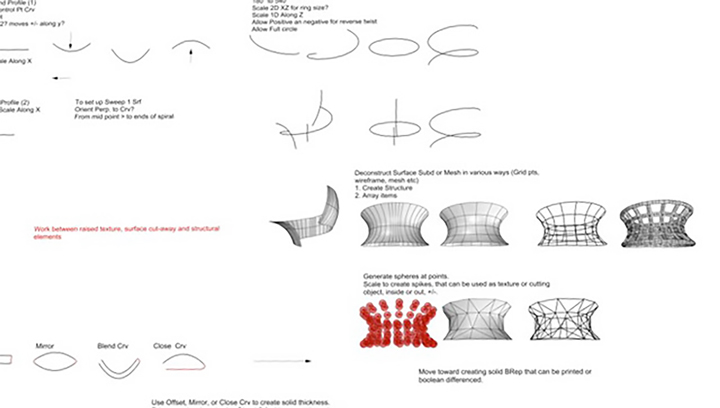
Once 3D-printed, these objects will be presented to the individuals whose experience – mediated through the survey - modelled them. Facilitated conversations in small groups will provide the opportunity for intimate discussion as participants interpret the objects produced in the context of their own experiences. This will provide researchers with the opportunity to capture more narrative/qualitative insights and responses. It is hoped that this conversation will not only serve to answer our initial research questions, but also contribute to a broader discussion of racism and its impacts in post-secondary education.
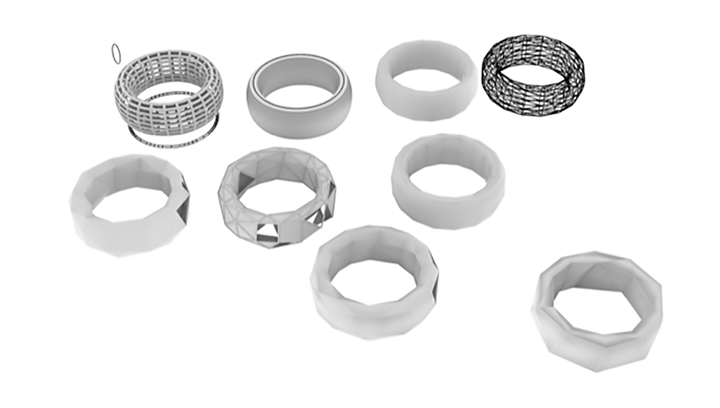
We believe that the project has potential to start a meaningful conversation about injustice and racism and to identify issues, barriers faced by certain groups and individuals within a given system. As craft practitioners, we have experienced first-hand the ways in which objects can be used to create meaning, and want to engage participants in discussion regarding not only the particularities of their experience, but their views/assumptions/appraisal of the ability of objects to convey personal narrative. Once developed the project can potentially be applied to any line of questioning to illustrate disparities among respondents.
Craft and the Digital Turn: Navigating the Folds stems from a Canada-wide project investigating synergies between craft and the digital. Stories shared by Canadian academics and students in craft programs have been translated into a VR experience, revealing the ways in which the digital realm intersects with craft skills.
The viewer navigates through a virtual Canadian landscape encountering fabrics and structures while listening to a soundscape made up of recorded voices and ambient music. This in-person VR experience invites 15 participants to sign up for 30-minute time slots to wear a headset and explore the virtual environment.
Ironing can be deeply satisfying, completely tedious, a mindful meditation or mindless time drain. But what does it have in common with learning to build a digital world? This exposition explores the nature of learning and unlearning through the juxtaposition of craft skills, such as ironing, learned for the most part through unconscious absorption, versus creating through a digital interface.
Response to Anne Wilson's Davis Street Drawing Room (October 2022)
The Davis Street Drawing Room aims to foster invention and critical thinking; slow looking and complexity; textile histories, the everyday, and contemporary art. Textile parts, excavations from years of Anne Wilson’s art-making, form an archive displayed over multiple horizontal surfaces and walls in the studio (or drawing room) at 1302 Davis Street, Evanston, Illinois.
The notion of craft and working by hand are inextricably linked in the popular imagination. Wilson’s work, composed of hand and digitally manipulated lace structures invites the viewer into a material process and meaning which displaces that notion.
The control of creative methods and output through materiality, tools and process is a central concern in craft methodology. The Davis Street Drawing Room project allows our research project to collect examples of ways in which craft practitioners are realising pedagogical, technical and methodological developments through craft perspectives.
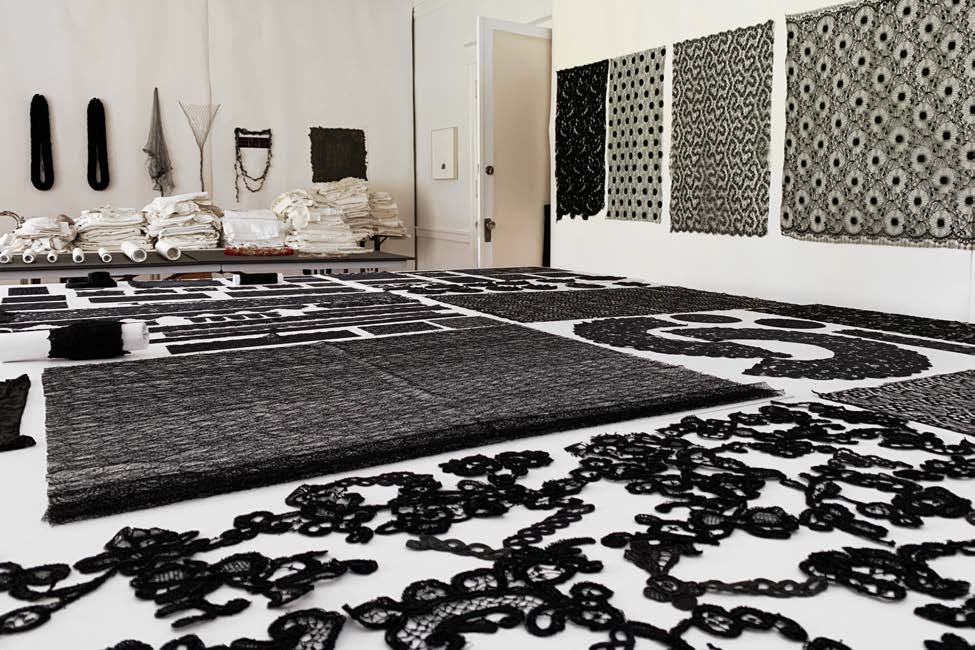
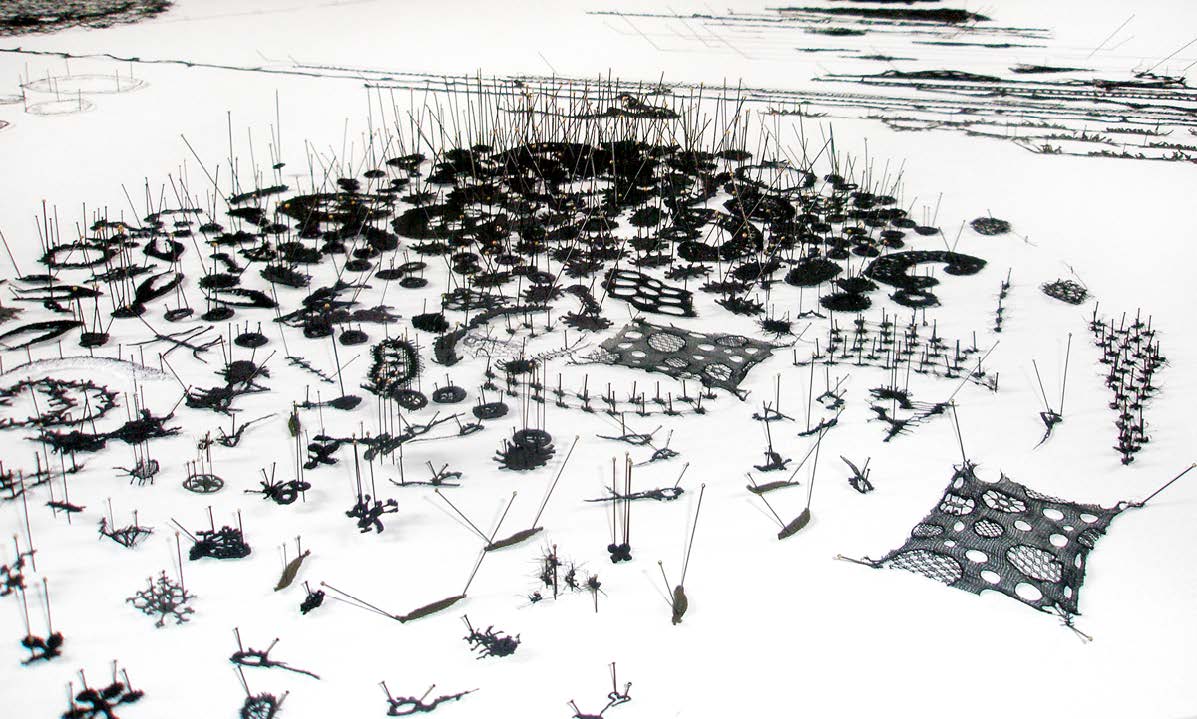
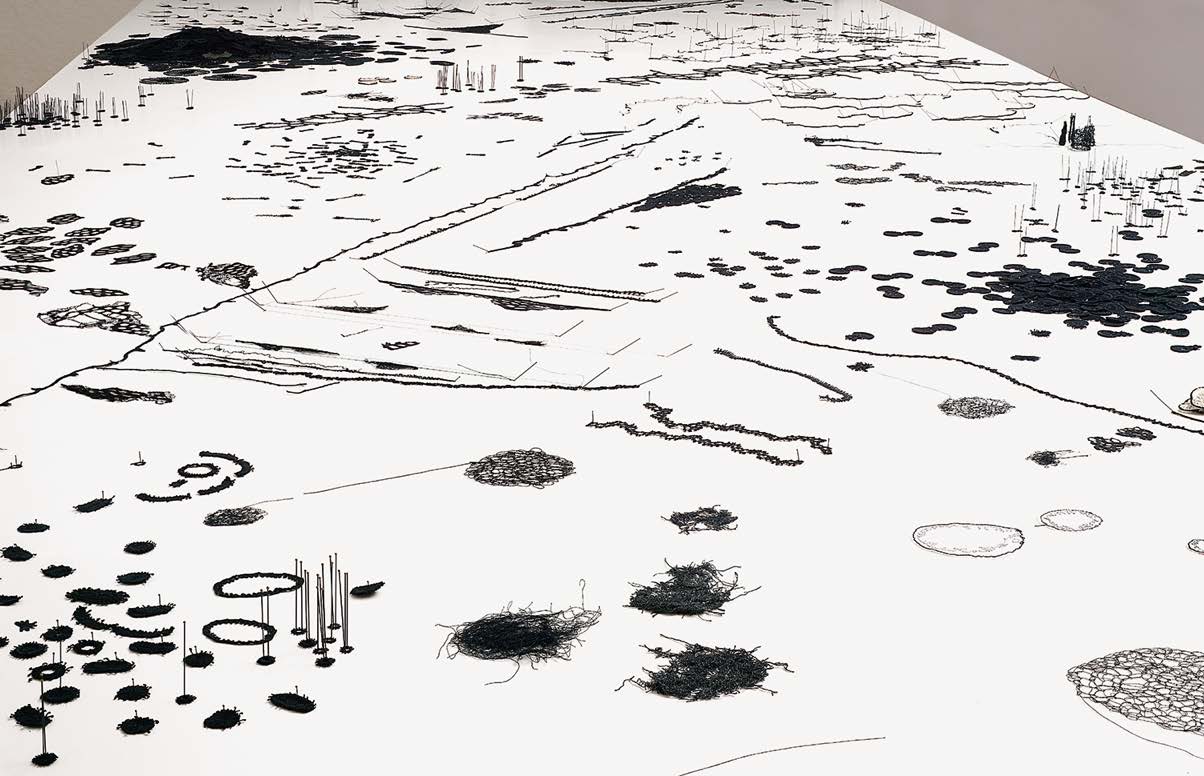
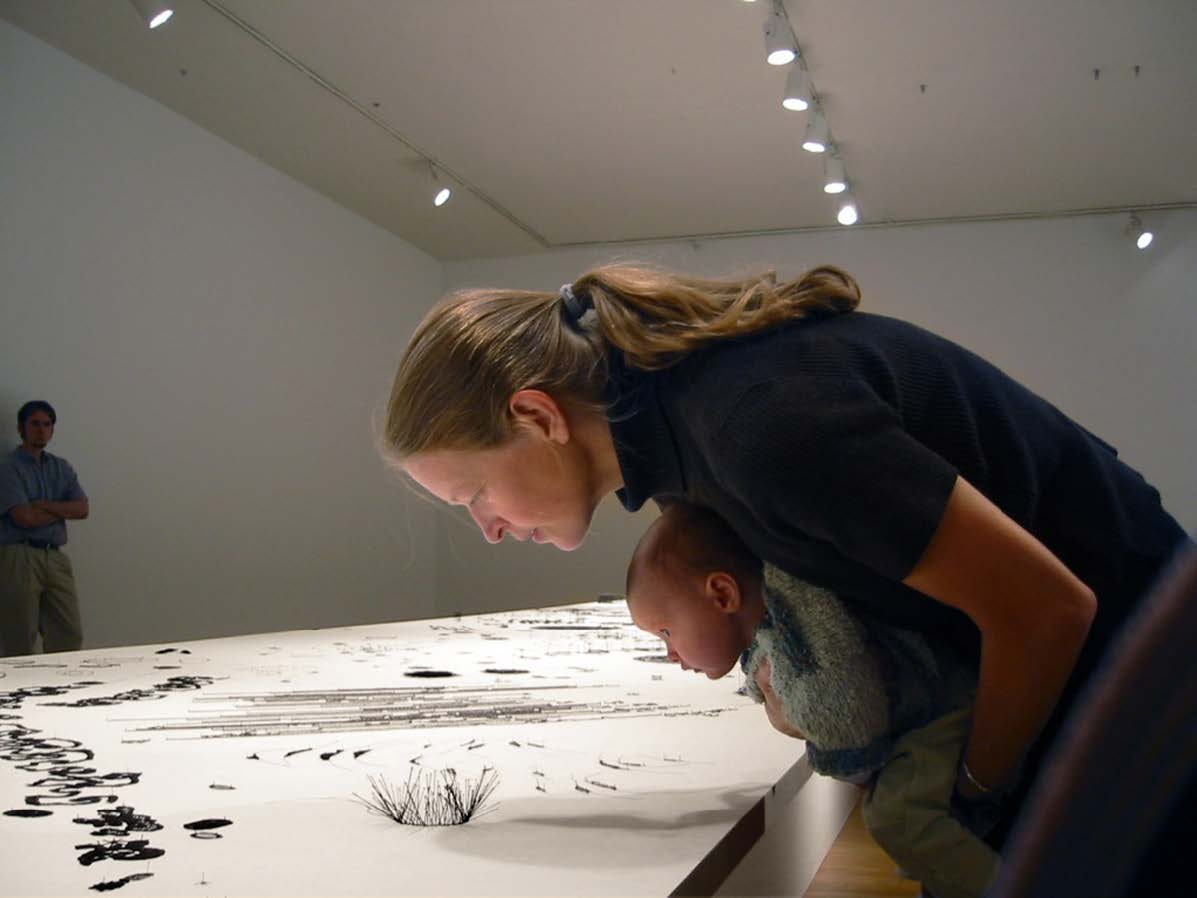
Thinking/Sinking Into the Folds of Craft and the Digital Turn
Presentation of Thinking/Sinking into the Folds of Craft and the Digital Turn at the 13th SAR Conference, Bauhaus-Universität Weimar.
The speculative topographic environment imagines the future of craft by trying to situate and interact with voices across specific locations in the country. This video gives a sense of the VR experience that conference attendees were invited to try for themselves with the VR headset.
We are most grateful to Ted Carrick for the development and composition of the VR audioscape.
Shiny New Toys: A History of Digital Technology in Canadian Post-Secondary Craft






























A series of ten posters were created for the pilot research project Craft, Pedagogy and the Digital Challenge. The image is based on the suffragette banner, Standing Together…, by the National Women’s Party, 1913-1920, as photographed in the exhibition Agitprop! at the Brooklyn Museum, 2016 by Alex Kittle. These posters are an example of the team exploring the conventions and practicalities of a historical means of visualizing feminist voice and imagery. The images were digitally collaged, printed out in black and white and then hand coloured using pastel chalk.

Integral to our research is the production of a visual representation of our enquiry through a Research Wall which will be documented on an ongoing basis for inclusion in our articles and presentations. This is a space where visual material, images, symbols and artefacts will be assembled. This visualization is critical to developing an understanding of the accumulated data and will facilitate a creative interpretation of the findings. The manifestations of the Research Wall will be a traveling exhibition.



